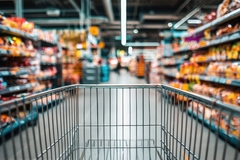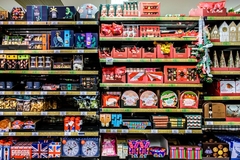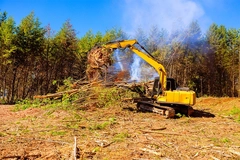
- Industry news
Industry news
- Category news
Category news
- Reports
- Key trends
- Multimedia
- Journal
- Events
- Suppliers
- Home
- Industry news
Industry news
- Category news
Category news
- Reports
- Key trends
- Multimedia
- Events
- Suppliers
Scientists investigate beer and wine aromas to overcome substitute formulation challenges

Scientists in Germany have identified the average proportions of 29 compounds from beer and 32 from wine that make up the drinks’ distinct aromas. The team used a trained sensory panel to determine the key ingredients that distinguish these aromas and claims the discovery can help food scientists develop flavorful, non-alcoholic substitutes.
The study revealed that when 11 fruity compounds, predominantly esters, in the beer aroma base model were adjusted to the respective concentration levels in the wine aroma base model, the sensory panel no longer described the sample as beer-like but wine-like.
The findings come as consumers increasingly seek non-alcoholic versions of beer and wine. The research team from the Technical University of Munich observed that despite boasting different flavors, the two drinks share many aromas, making it difficult to produce alcohol-free versions that mimic the real thing.

“Food and beverage researchers are working to recreate the enjoyable aromas and flavors of beer and wine in alcohol-free substitutes. However, because both beer and wine are fermented, they have similar fragrances, and little is known about which scents evoke the unique character of each drink,” says the study.
 Identifying the scented compounds could help food scientists develop non-alcoholic beer and wine that taste like the orignals (Image credit: Jantira Namwong).While previous studies have investigated wine aromas and also defined an “aroma base” consisting of ethanol and other fermentation-derived compounds, the current study states that no such research was ever undertaken with beer aroma compounds. The findings are published in the Journal of Agricultural and Food Chemistry.
Identifying the scented compounds could help food scientists develop non-alcoholic beer and wine that taste like the orignals (Image credit: Jantira Namwong).While previous studies have investigated wine aromas and also defined an “aroma base” consisting of ethanol and other fermentation-derived compounds, the current study states that no such research was ever undertaken with beer aroma compounds. The findings are published in the Journal of Agricultural and Food Chemistry.
Gauging ingredient influence
The researchers, Xingije Wang, Stephanie Frank and Martin Steinhaus, first conducted a literature review and identified the average proportions of compounds from beer and wine that make up the drinks’ aromas. Then they used these proportions like recipes to concoct standard beverages that smelled like either beer or wine.
Further, they modified these standards, swapping levels of select fragrances in the beer-like beverage to match those in the wine-like beverage, or vice versa, to test which ingredients influenced the perception of each drink.
Trained taste testers then smelled each tweaked sample and evaluated it on a scale of “beer-like to wine-like.”
The sensory panel found that “stronger fruity aromas made drinks smell more like wine,” note the researchers.
The team also swapped the entire profile of scented compounds from one standard into the opposite drink’s base liquid and found that the scented compounds, rather than the base liquid, made the biggest difference in beer- versus wine-like aroma to the testers.
 The global wine industry is dealing with climate change and trade barrier challenges.These results could be used to develop drinks that better mimic beer or wine while meeting consumers’ preferences for non-alcoholic options, the scientists claim.
The global wine industry is dealing with climate change and trade barrier challenges.These results could be used to develop drinks that better mimic beer or wine while meeting consumers’ preferences for non-alcoholic options, the scientists claim.
Alcohol troubles
The global wine and beer industry is struggling with climate change impacts and trade barrier challenges. The European Committee of Wine Companies previously told Food Ingredients First that it is calling for the European Commission to increase support for innovation and investment to increase the sector’s resilience against labor shortages and marketing hurdles.
Additionally, the Chinese Ministry of Commerce recently announced that importers of EU wine-based and marc-based products to China must provide security deposits based on provisional anti-dumping duties. The move is expected to significantly increase the financial burden on wine producers exporting to China.
The current landscape, coupled with consumers’ rising health awareness, is driving the demand for alcohol alternatives, with beverage companies tapping the trend by driving NPD and innovation in the space.
Meanwhile, governments are also ramping up efforts to reduce consumer appetite for alcohol, such as the UK reviewing the threshold for labeling a beverage as “alcohol-free.”










